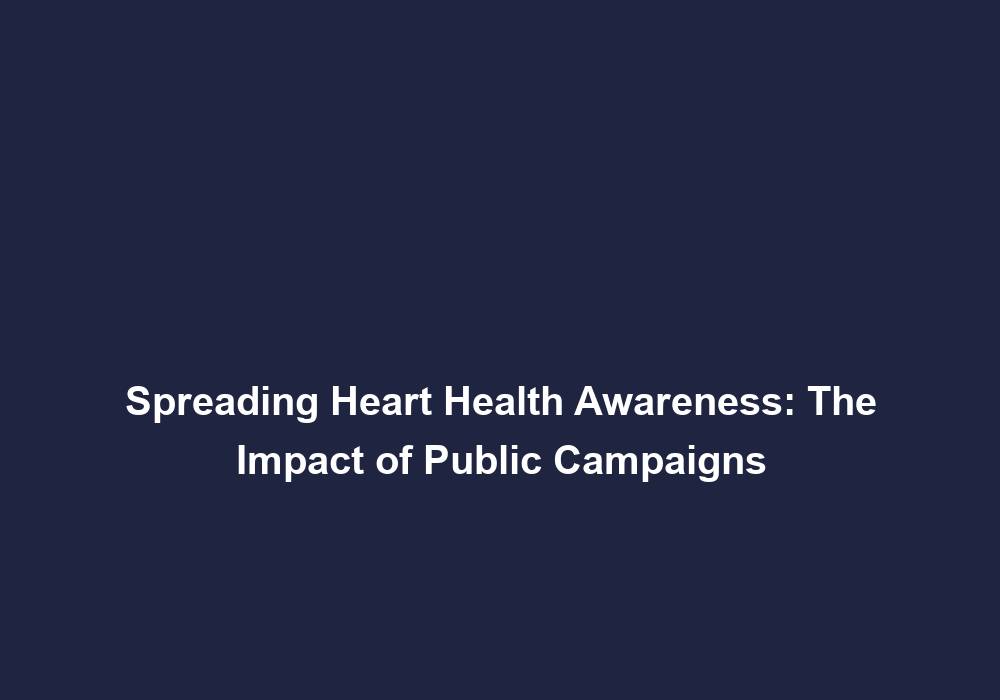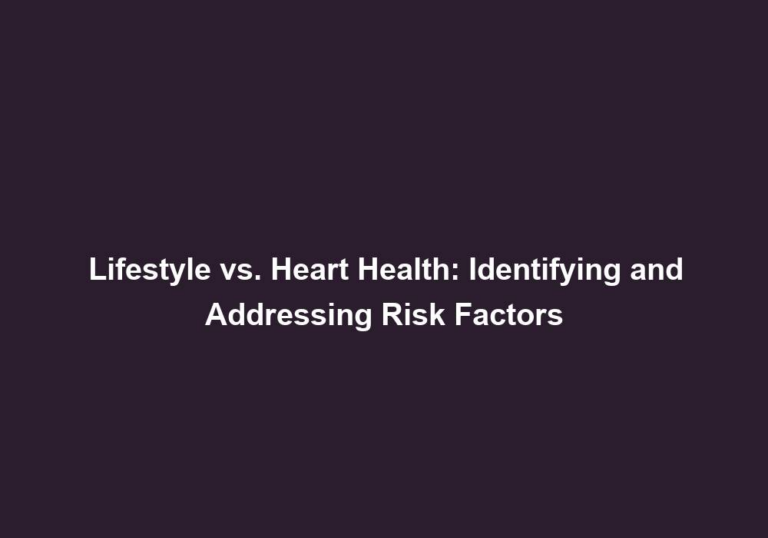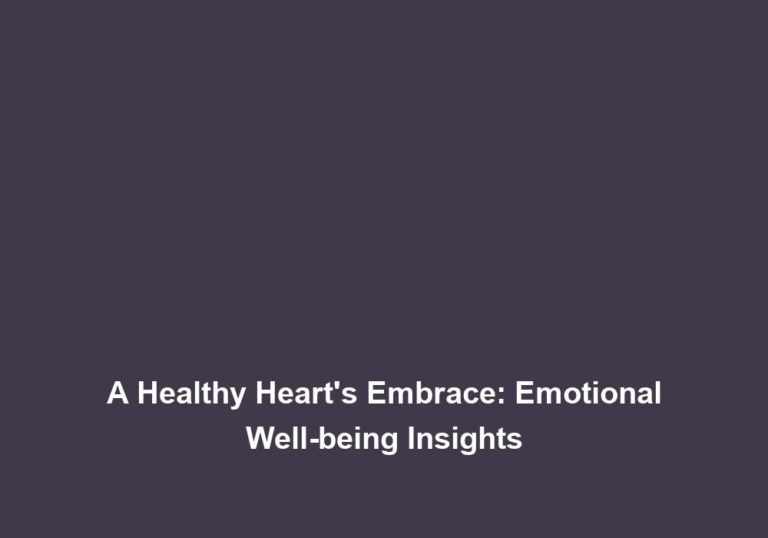Spreading Heart Health Awareness: The Impact of Public Campaigns
In recent years, there has been a growing concern regarding heart health and the need for public awareness campaigns to address this alarming issue. Heart disease continues to be the leading cause of death globally, and the importance of educating the public about heart health cannot be overstated. Public campaigns play a vital role in spreading awareness, promoting healthy lifestyle choices, and ultimately reducing the prevalence of heart disease. This article delves into the impact of such campaigns and the significance they hold in improving cardiovascular health.
Understanding the Need for Heart Health Awareness
Heart disease, including conditions such as coronary artery disease, heart attacks, and strokes, affects millions of people worldwide. Despite medical advancements, heart disease remains a significant health concern, leading to numerous fatalities each year. However, many cases of heart disease can be prevented or managed through simple lifestyle changes and early detection.
Public campaigns focusing on heart health awareness are crucial as they aim to educate individuals about the risk factors, symptoms, and preventive measures associated with heart disease. By providing comprehensive information regarding healthy lifestyle choices, such as engaging in regular exercise, maintaining balanced diets, and managing stress effectively, these campaigns empower individuals to take control of their cardiovascular health.
The Impact of Public Campaigns on Heart Health
-
Education and Awareness: Public campaigns serve as a powerful tool to raise awareness about heart disease and its prevention. By disseminating information through multiple channels, such as television, radio, social media, and print media, campaigns reach a wide audience. This increased awareness helps individuals recognize the warning signs of heart disease and motivates them to seek timely medical assistance.
- Public campaigns provide educational materials, such as brochures and infographics, that explain the risk factors associated with heart disease and how to manage them effectively.
- These campaigns use relatable language and visuals to capture the attention of the target audience and encourage engagement.
- By collaborating with healthcare professionals, campaigns ensure that accurate and up-to-date information is provided to the public.
-
Behavioral Changes: Public campaigns can significantly influence individual behaviors and promote positive lifestyle changes. By emphasizing the benefits of regular physical activity, healthy eating habits, and smoking cessation, these campaigns inspire individuals to adopt heart-healthy practices. This, in turn, reduces their risk of developing heart disease and improves overall cardiovascular health.
- Campaigns provide practical tips and guidance on incorporating physical activity into daily routines, such as taking the stairs instead of the elevator or going for a walk during lunch breaks.
- They emphasize the importance of consuming a balanced diet rich in fruits, vegetables, whole grains, and lean proteins while limiting the intake of saturated and trans fats, sodium, and added sugars.
- Public campaigns highlight the detrimental effects of smoking on heart health and provide resources for smoking cessation, such as helplines and support groups.
-
Early Detection and Screening: Public campaigns often highlight the importance of regular health check-ups, including cardiovascular screenings. By encouraging individuals to undergo routine screenings, campaigns enable early detection of risk factors and potential cardiac conditions. Early intervention can prevent the progression of heart disease and improve health outcomes.
- Campaigns provide information on the recommended frequency of cardiovascular screenings, such as blood pressure checks, cholesterol tests, and electrocardiograms.
- They educate individuals about the warning signs and symptoms of heart disease, such as chest pain, shortness of breath, and palpitations, prompting them to seek medical attention promptly.
- Public campaigns emphasize the importance of knowing one’s family history of heart disease, as it can help identify individuals at higher risk who may require earlier and more frequent screenings.
-
Empowering Communities: Public campaigns not only target individuals but also whole communities. They aim to create an environment that supports heart health by advocating for policies that promote physical activity, access to healthy food options, and smoke-free zones. By involving communities, campaigns foster a sense of collective responsibility towards heart health, leading to long-lasting positive changes.
- Public campaigns collaborate with local organizations, schools, and workplaces to implement initiatives that encourage physical activity, such as community walks, workplace wellness programs, and after-school sports programs.
- They advocate for policies that increase access to affordable and nutritious food, such as farmers’ markets in underserved areas and healthier food options in schools and workplaces.
- Public campaigns work with policymakers to establish smoke-free zones in public areas, protecting individuals from the harmful effects of secondhand smoke.
-
Reducing Disparities: Heart disease affects various demographic groups differently, with certain populations facing higher risks and poorer outcomes. Public campaigns play a crucial role in addressing these disparities by specifically targeting vulnerable populations, including those with low socioeconomic status, racial/ethnic minorities, and older adults. By tailoring messages and interventions to their unique needs, campaigns strive to bridge the gap and ensure equitable access to heart health resources.
- Public campaigns develop culturally sensitive materials and strategies to reach diverse populations, considering language barriers and cultural beliefs.
- They collaborate with community leaders, healthcare providers, and advocacy groups to identify and address barriers to accessing heart health resources, such as lack of insurance coverage or transportation issues.
- Public campaigns aim to increase awareness among healthcare professionals about the disparities in heart disease outcomes, promoting culturally competent care and tailored interventions.
Key Components of Successful Public Campaigns
To maximize the impact of public campaigns on heart health awareness, several key components should be considered:
-
Clear and Compelling Messaging: Campaign messages should be concise, easy to understand, and resonate with the target audience. Using relatable language and visuals can help capture attention and encourage engagement.
-
Multichannel Approach: To reach a wide audience, campaigns should utilize multiple communication channels, including traditional media, social media platforms, healthcare facilities, schools, and workplaces. This ensures that the message reaches individuals in various settings and maximizes its impact.
-
Collaboration and Partnerships: Successful campaigns often involve collaborations with healthcare professionals, community organizations, government agencies, and influential individuals. These partnerships enhance credibility, broaden the campaign’s reach, and facilitate the implementation of targeted interventions.
-
Measuring and Evaluating Impact: To assess the effectiveness of a public campaign, it is essential to establish measurable goals and regularly evaluate its impact. This can be done through surveys, focus groups, or analysis of health data to gauge changes in knowledge, attitudes, and behaviors related to heart health.
-
Sustainability and Long-Term Commitment: Public campaigns should not be short-lived endeavors but rather part of a long-term commitment to promoting heart health. Sustained efforts are necessary to reinforce positive behaviors and ensure that heart health remains a priority in society.
Conclusion
Public campaigns focused on spreading heart health awareness have the potential to create a significant impact on individuals, communities, and overall cardiovascular health. By increasing knowledge, inspiring behavioral changes, promoting early detection, and addressing disparities, these campaigns play a crucial role in preventing heart disease and enhancing the well-being of populations worldwide. Through collaborative efforts and sustained commitment, we can continue to raise awareness, empower individuals, and ultimately reduce the burden of heart disease on society.
Note: This article is written in markdown format, suitable for online publishing and easy formatting.







